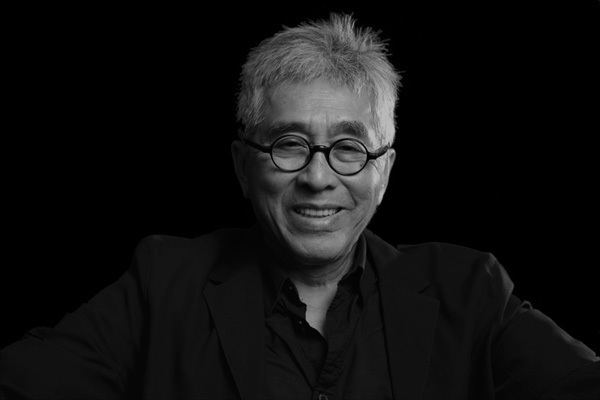Nationality Singapore Name Timothy Seow Website www.intl-ds.com | Years active 1970s - Present Occupation Architect, Designer Role Architect | |
 | ||
Balinese Resort Good Class Bungalow Holiday
Dr. Timothy Seow is a Singapore-based Architect (1970s – present). Active for more than 40 years, Seow and his team at IDS (International Design Studio) constitute one of the most significant architecture firms in South East Asia, with a record of projects in Singapore, Canada, China and the Middle East. He was one of the pioneers who came up with the concept of high-rise buildings integrated with exterior gardens and swimming pools or what he calls “bungalows in the air”. This model has been emulated by most residential developments in Southeast Asia. The concept was widely influential and was one of the most significant early developments of what came to be known as green architecture.
Contents
- Balinese Resort Good Class Bungalow Holiday
- Early life
- Career
- Major awards and achievements
- Notable buildings
- Legal cases
- Conclusion
- References
Early life
Timothy Seow was born and raised in Singapore. He was trained at Oxford Brookes University, London and during his travels was inspired by the architecture of San Francisco and Vancouver. When Seow later left his 30-year practice to join CPG Consultants, presently known as International Design Studio (IDS Studio) in 2003, he created quite a stir among his peers. Yet he claims this decision as the best move he has made in his career. IDS Studio is a large organisation with international exposure and offices in China, India, Vietnam, Philippines, Australia, and the Middle East.
Career
Seow has been creating iconic development not only in Singapore but also abroad. Seow and his team have proposed refreshing design ideas and concepts for an abundance of high profile projects, winning numerous local and overseas awards in the process which made him prominent in this industry. He is involved in every project which is undertaken by IDS, helping to define and determine how the projects can accomplish more than was required in the design brief.
He has been featured in several magazines and newspapers including The Business Times (Singapore), The Edge, Home & Décor, Home & Apartment Trends and the Sentosa Cove. He appeared in the World Architecture magazine for his designs in Philippines, Malaysia and Singapore.
Major awards and achievements
Notable buildings
Tong Building, Singapore Located in Singapore's famous Orchard Road, this 19-story building was built in 1978. It is designed for mixed retail, commercial and residential purposes. It was one of the unique buildings of the mid-80’s because of its curtain wall look façade. It had a setback concept creating a plaza where a wide variety of activities could take place. Even after 37 yrs, the Tong Building still retains its contemporary look. Seow won an honorable mention award by the Singapore Institute of Architects in the category of Commercial Projects.
Icon Residence, Malaysia Icon Residences features buildings blocks that gives each tower a uniquely different profile, with bridges linking internal spaces and gardens weaving in and around the units. It is located in Mont Kiara which is in the heart of Kuala Lumpur, Malaysia's federal capital. Icon Residence also won several awards.
Icon City, Malaysia This award winning building is located in Petaling Jaya, Malaysia. The design was inspired by the random characteristics of mountainous rocks weathered by nature. It is a mixed development consisting of two residential towers, boutique offices, a shopping mall and a hotel.
St. Martin Residence, Singapore This building, built in 2001, is located on St. Martin's Drive, Singapore. It is a 4-story condominium with 82 housing units. The front view combines of both modern and traditional Asian elements.The idea behind this design was to create a vision of a tropical retreat on an urban island. This residency was awarded by the Singapore Institute of Architects in 2001 for its ‘Excellency in Architecture.”
Manama Lagoon, Bahrain This residential building in Manama, Bahrain is unique in terms of its collective design elements. The use of gardens terracing from level to level is its main design component. The architecture consists of a series of rectilinear forms. Each unit has its own intimate, unique space with views towards the landscaped courtyards and water features looking out towards the views of the Bahrain waters. This building won the World Architecture News (WAN) award.
Nanyang Technological University, Singapore It is one of the top universities in the world, commonly known as NTU. Timothy Seow was the lead designer who designed the School of Art, Design and Media (ADM) at NTU which was completed in 2006. It is a 4-story building with sloped 'grass roofs'. Besides the aesthetic features, the roofs keep the temperature cool during day time. Its building consists of 3 interconnected blocks covered with roofs weaving in and out of the ground. The idea was to blend architecture with its landscape rather than dominate it. This building was one of the 4 international entries that received the Honour Award in 2007 for Innovative Learning Environments.
Legal cases
Seow, along with four other directors of his company, was sued by Jeffery Henry Yap in the case “Yap Jeffery Henry v Seow Timothy and Others (2006)”. He was accused of establishing a company with the intention to defraud its creditors, and subsequently convicted. It was found out that Seow in fact did defraud creditors out of millions of dollars (SGD). Although given the option, Jeffery Henry Yap chose not to pursue criminal charges. The full judgement of the case is available to the public.
Conclusion
Seow is still prominent in the field of architecture and he continues to practice, focusing on his specialty, high-rise residential buildings with extensive gardens. He has carried his concept of “bungalows in the air”, first developed in the 1970s, into the 21st century with ever larger structures.
